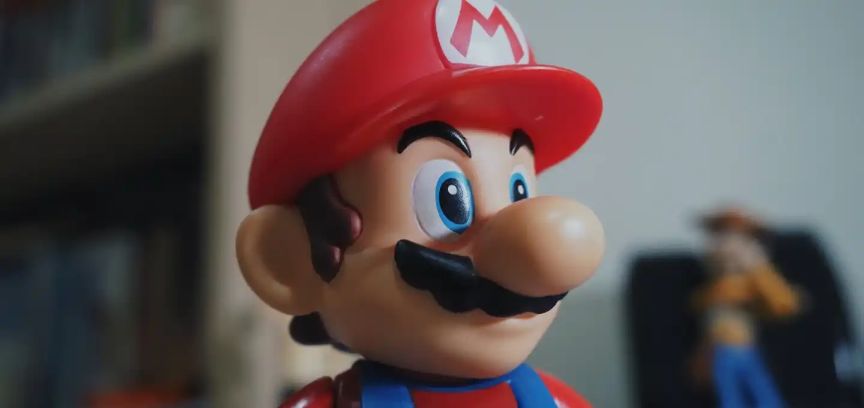The Enduring Legacy of Super Mario: From Pixel Plumber to Icon
4 min read
12 Aug 2024
In the world of video games, few characters have left as profound a mark as Mario, the lovable Italian plumber created by Shigeru Miyamoto. Since his debut in 1985's "Super Mario Bros.," Mario has transcended pixels and screens to become an enduring cultural icon. This article celebrates the remarkable journey of Mario from a humble pixelated plumber to a global symbol of gaming, innovation, and nostalgia.
The Birth of a Legend
Mario's journey began in the early '80s when Nintendo was developing a new arcade game called "Donkey Kong." Originally known as Jumpman, Mario was conceived as a carpenter in the game's initial drafts. However, due to hardware limitations and a need for character differentiation, he was recast as a plumber and named after Mario Segale, a landlord who demanded rent from the warehouse where Nintendo of America was operating.

Super Mario Bros. Revolutionizes Gaming
In 1985, "Super Mario Bros." was released for the Nintendo Entertainment System (NES). This groundbreaking game introduced side-scrolling platforming, innovative level design, and a memorable cast of characters. Players guided Mario through the Mushroom Kingdom to rescue Princess Peach from the clutches of the villainous Bowser. It was a massive success, selling millions of copies and becoming an instant classic. This game laid the foundation for the platforming genre and made Mario a household name.
The Power of Sequels
The success of "Super Mario Bros." spawned a series of sequels, each building upon the formula of the original while introducing new gameplay mechanics and power-ups. "Super Mario Bros. 2" brought unique character abilities and a dream-like world, "Super Mario Bros. 3" introduced an expansive map and new suits, and "Super Mario World" showcased the capabilities of the Super Nintendo Entertainment System (SNES). These titles demonstrated Nintendo's commitment to innovation and quality.
Super Mario 64: The 3D Revolution
In 1996, "Super Mario 64" made history by taking Mario into the realm of 3D gaming. This groundbreaking title allowed players to explore Princess Peach's castle and jump into various paintings to access different levels. "Super Mario 64" not only set new standards for 3D platforming but also showcased the potential of the Nintendo 64 console. Its innovative control scheme and freeform exploration were monumental achievements in the gaming industry.
Mario Kart, Mario Party, and Mario Spin-offs
Mario's popularity extended beyond traditional platformers. The introduction of "Mario Kart" in 1992 brought the beloved characters into the world of kart racing, leading to a series of wildly successful titles. "Mario Party" brought friends together for competitive and cooperative mini-games. Additionally, spin-off games like "Mario Tennis," "Mario Golf," and "Mario Party" demonstrated Mario's versatility and enduring appeal.
Galaxy-Hopping and Odyssey
In 2007, "Super Mario Galaxy" for the Wii introduced players to gravity-defying platforming across various celestial bodies. Its imaginative level design and innovative mechanics earned critical acclaim. "Super Mario Odyssey," released in 2017 for the Nintendo Switch, continued this tradition by taking Mario on a globe-trotting adventure. These titles exemplify Nintendo's ability to reinvent the series while maintaining its core essence.
Mario's Impact Beyond Gaming
Mario's influence extends far beyond the gaming world. He has appeared in cartoons, movies, and merchandise, making him one of the most recognizable characters in popular culture. The 1993 live-action "Super Mario Bros." movie, while not a critical success, further cemented Mario's place in entertainment history.
Nostalgia and Enduring Popularity
In an era of constant change in the gaming industry, Mario's enduring popularity is a testament to his timeless appeal. Fans of all ages continue to enjoy Mario's adventures, and each new generation of players discovers the joy of stomping Goombas, collecting Power Stars, and rescuing Princess Peach. The nostalgia associated with Mario and the Mushroom Kingdom is a powerful force that keeps players coming back.
Innovation and Evolution
What sets Mario apart is not just his past achievements but his ongoing commitment to innovation. With each new installment, Nintendo pushes the boundaries of game design, introducing fresh gameplay mechanics, art styles, and storytelling approaches. Whether it's the gravity-defying gameplay of "Super Mario Galaxy" or the open-world exploration of "Super Mario Odyssey," Mario continues to evolve while staying true to his core identity.
Conclusion
Mario's journey from a pixelated plumber to an iconic figure in the gaming world is a testament to the power of creativity, innovation, and enduring appeal. He has not only redefined the platforming genre but also influenced generations of gamers and inspired countless game developers.
As Mario celebrates his legacy, he continues to break new ground, making each adventure feel as fresh and exciting as the first. Whether you're a seasoned gamer or a newcomer to the Mushroom Kingdom, the enduring charm and timeless adventures of Mario ensure that his legacy will continue for generations to come. Mario's journey is far from over, and fans eagerly await the next chapter in the adventures of this beloved character.


